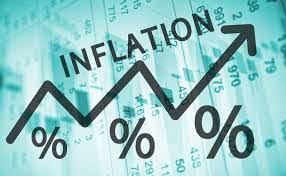The Year-on-year inflation stood at 7.8 per cent in June compared to 7.5 per cent in May, pushed slightly by transport and food items, the Government Statistician Professor Samuel Kobina Annim said on Wednesday.
Speaking at a press briefing to announce the rate, Prof Annim said food and transport were the dominant drivers for the higher rate of inflation in June 2021.
Food contributed 41.8 per cent to overall inflation while transport contribution increased from 16.5 per cent last month to 18.1 per cent.
“Inflation for June 2021 indicates that the six-month continuous decline in food inflation has been reversed by 1.9 percentage points,” he said.
The Month-on-Month inflation was 1.3 per cent while the Month-on-month food inflation exceeds non-food inflation by 1.0 percentage point.
Year-on-year variation between food 7.3 per cent and non-food inflation 8.2 per cent was 0.9 per cent.
“A reversal in the declining trend of food inflation has been observed for the first time in six months as it increases by 1.9 percentage points between May and June 2021. This has contributed in closing the gap between food and non-food inflation,” Prof Annim said.
Inflation of local items vrs Imported items
Inflation for locally produced items has regained its dominance over inflation for imported items, surpassing inflation for imported items by 0.9 percentage points.
Inflation for locally produced items was 7.9 per cent compared to that of imported items at 7.0 per cent.
The Northern Region continues to record higher Year-on-Year food inflation at 16.2 per cent, closely followed by Upper West 14.8 per cent and distantly next is Greater Accra at 9.9 per cent.
The Western Region recorded a deflation in food inflation by 1.1 per cent.
Overall, Greater Accra recorded the highest rates of inflation for both non-food 14.4 per cent and overall inflation at 12.5 per cent.
What it means to your pocket?
Inflation is typically measured by taking into consideration the price of essential goods and services as opposed to all goods and services. That is, inflation is geared towards consumables in the consumer price index like food prices as well as the price of clothing, housing, energy, education, healthcare among others.
Should the price of all goods and services in the consumer price index increase by say 6%, the rate of inflation is pegged at 6% and the purchasing power decreases by 6%.
In this case, for instance, the 7.8% increase in inflation means that prices of goods and services recorded an increase of 7.8% in June this year compared to May where it recorded a 7.5 percentage point.
Given the after effects of COVID-19 on businesses and household incomes, plus increase in fuel prices and transport fares, the inching of inflation in June is a true reflection of the state of the economy.
With food and transport as the dominant drivers of the increased inflation, consumers should expect to pay more for basic consumables.
Partly sourced from GNA




